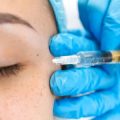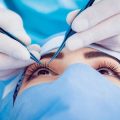Introduction to CoolSculpting and Its Popularity in the U.S.
CoolSculpting has quickly risen to prominence as a leading non-invasive fat reduction treatment in the United States. Utilizing advanced cryolipolysis technology, this procedure targets and eliminates stubborn fat cells by freezing them without surgery or downtime. The appeal of CoolSculpting lies in its ability to deliver noticeable results with minimal risk and recovery time, making it an attractive alternative for individuals seeking body contouring solutions outside of traditional liposuction. With a focus on safety, effectiveness, and convenience, CoolSculpting has become a go-to aesthetic option among Americans who want to improve their appearance while maintaining an active lifestyle. Its growing popularity is further fueled by a cultural emphasis on wellness, self-confidence, and minimally invasive treatments that fit seamlessly into busy schedules.
General Eligibility: Who Should Consider CoolSculpting?
CoolSculpting is a non-invasive fat reduction treatment designed for individuals who want to target stubborn fat deposits that are resistant to diet and exercise. However, not everyone is an ideal candidate for this procedure. Understanding the general eligibility criteria can help you determine if CoolSculpting aligns with your health profile and body goals.
Baseline Requirements for CoolSculpting
Before considering CoolSculpting, it is important to evaluate several key factors, including age, general health status, and body mass index (BMI). Here’s a quick breakdown:
| Criteria | Requirement | Notes |
|---|---|---|
| Age | 18 years or older | Treatment is intended for adults; parental consent is required for patients under 18. |
| General Health | Good overall health | No serious medical conditions such as uncontrolled diabetes, cardiovascular disease, or active infections in the treatment area. |
| BMI | Below 30 (ideally 20-27) | CoolSculpting is not a weight loss solution; it works best for those near their ideal weight with localized fat bulges. |
Why These Criteria Matter
The effectiveness and safety of CoolSculpting largely depend on meeting these baseline requirements. Patients who are significantly overweight or have certain chronic illnesses may experience suboptimal results or increased risks. Additionally, the technology is designed to contour the body rather than serve as a primary method of weight reduction.
Cultural Considerations in the U.S.
In the United States, there is a strong emphasis on patient safety, informed consent, and realistic expectations when it comes to aesthetic procedures like CoolSculpting. Providers typically conduct thorough consultations to ensure that candidates meet these general guidelines before proceeding with treatment.
![]()
3. Ideal Physical Traits for CoolSculpting Candidates
When considering whether you are a good fit for CoolSculpting, it’s essential to evaluate specific body characteristics that make someone particularly suited for this treatment. Stubborn fat pockets are one of the most common traits among ideal candidates. These are localized areas of fat that persist despite consistent diet and exercise efforts—think love handles, muffin tops, or small bulges on the abdomen, thighs, or under the chin. People who struggle with these isolated problem zones, rather than overall obesity, typically see the best results.
Another important factor is the presence of moderate fat bulges. CoolSculpting is designed to target moderate—not excessive—amounts of subcutaneous fat. Candidates should have enough fat in the desired treatment area for the applicator to grasp, but not so much that surgical intervention would be more appropriate. Generally, if you can pinch an inch or two of fat in the targeted region, you may be a suitable candidate.
Skin elasticity also plays a crucial role in determining candidacy for CoolSculpting. Ideal candidates have firm, elastic skin that can retract smoothly after the fat cells have been eliminated. If your skin is excessively loose or sagging, you may not achieve optimal contouring results from this procedure alone. Good skin tone helps ensure that treated areas look natural and well-defined post-treatment.
In summary, individuals with persistent localized fat deposits, moderate bulges resistant to lifestyle changes, and healthy skin elasticity are considered the best candidates for CoolSculpting. Understanding these physical traits can help set realistic expectations and maximize satisfaction with your results.
4. Lifestyle and Personal Goals Alignment
When considering CoolSculpting as a fat reduction solution, it’s crucial for candidates to align their lifestyle habits and personal goals with the expected outcomes of this treatment. Unlike weight loss surgeries or rapid fat-loss methods, CoolSculpting is designed for individuals who already maintain healthy routines but struggle with localized fat deposits that resist diet and exercise. Understanding this alignment can help ensure satisfaction and maximize results.
Why Realistic Expectations Matter
Candidates with realistic expectations tend to experience greater satisfaction after CoolSculpting. This non-invasive procedure reduces fat in targeted areas by about 20-25% per session, but it is not a substitute for overall weight loss or a dramatic transformation. Those who understand these limitations are better positioned to appreciate the subtle yet noticeable improvements in their body contour.
The Role of Healthy Lifestyles
CoolSculpting works best for people who already practice healthy eating and regular physical activity. Maintaining these habits before and after the procedure helps preserve the results, as new fat accumulation can diminish the benefits of treatment. In fact, candidates who view CoolSculpting as an adjunct to their wellness routine—rather than a quick fix—tend to sustain their body contour improvements longer.
Setting Clear Body-Contouring Goals
Successful outcomes from CoolSculpting often depend on having specific, achievable body-contouring goals. Candidates should identify which areas they want to target (like the abdomen, flanks, or thighs) and discuss these with a provider during consultation. This targeted approach ensures that both the patient and practitioner have aligned expectations and can measure progress effectively.
Key Factors for Ideal Candidates
| Factor | Description |
|---|---|
| Realistic Expectations | Understands CoolSculpting’s capabilities and limits |
| Healthy Lifestyle | Maintains balanced diet and regular exercise routine |
| Clear Goals | Has specific areas of concern and measurable objectives |
Summary
Candidates who benefit most from CoolSculpting are those whose lifestyles support long-term results and whose expectations match what the procedure can realistically deliver. By combining healthy living with clear, attainable goals, individuals can achieve enhanced confidence and satisfaction through this innovative body-contouring treatment.
5. Who Might Not Be Suitable?
While CoolSculpting is a popular non-surgical fat reduction treatment, its not the right solution for everyone. Understanding who may not be an ideal candidate is crucial for safety and optimal results. Below, we identify groups for whom this procedure may not be appropriate.
Medical Conditions That Exclude Candidates
Certain medical conditions can make CoolSculpting unsafe or ineffective. Individuals with cryoglobulinemia, cold agglutinin disease, or paroxysmal cold hemoglobinuria should avoid this treatment due to heightened risk of severe complications when exposed to cold temperatures. Additionally, those with active infections, open wounds in the treatment area, or serious skin conditions should postpone or reconsider undergoing CoolSculpting.
Excessive Skin Laxity
CoolSculpting targets subcutaneous fat but does not address loose or sagging skin. Patients with significant skin laxity—often a result of major weight loss or aging—may find that fat reduction exacerbates the appearance of loose skin rather than improving their body contour. In these cases, surgical options like tummy tucks or body lifts might offer more satisfactory results.
Not Intended for Major Weight Loss
Its important to note that CoolSculpting is designed for individuals close to their ideal body weight who want to target stubborn fat pockets resistant to diet and exercise. Those seeking dramatic weight loss are unlikely to achieve their goals with this procedure alone. For people with a high body mass index (BMI) or those looking for comprehensive weight reduction, medical weight loss programs or bariatric surgery could be more appropriate alternatives.
Other Considerations
Pregnant or breastfeeding women should wait until after pregnancy and nursing before considering any cosmetic procedures, including CoolSculpting. Additionally, patients with unrealistic expectations about non-surgical fat reduction may be dissatisfied with their outcomes and should discuss alternative solutions with a qualified provider.
Ultimately, a thorough consultation with a licensed professional is essential to determine candidacy for CoolSculpting and ensure the safest, most effective approach tailored to individual needs.
6. How to Determine If You’re a Good Fit: Consultation Process
Before moving forward with CoolSculpting, it’s crucial to undergo a thorough assessment with a licensed provider. This professional evaluation ensures that the treatment aligns with your individual goals, body type, and medical history. During the initial consultation, you can expect the provider to review your health background, discuss your aesthetic objectives, and perform a detailed physical examination. The specialist will identify areas of stubborn fat that may respond well to CoolSculpting and assess whether your skin’s elasticity and general health make you an appropriate candidate.
Why a Professional Assessment Matters
CoolSculpting is not suitable for everyone; factors like underlying health conditions, pregnancy, or certain skin disorders may disqualify some individuals. A licensed provider uses their clinical expertise to screen for any contraindications and to establish realistic expectations based on scientific evidence. This process minimizes risks and maximizes safety, ensuring you are set up for successful results.
What Happens During Your Consultation?
The consultation typically involves several steps:
1. Medical History Review
Your provider will ask about current medications, allergies, past surgeries, and any chronic illnesses. This step helps rule out any issues that could interfere with the procedure or recovery process.
2. Physical Assessment
The provider examines target areas where you wish to reduce fat. Measurements may be taken, and photos might be used for baseline documentation and tracking progress after treatment.
3. Treatment Planning
Together, you’ll develop a personalized treatment plan tailored to your unique needs. The provider will explain how many sessions you might require, what results are possible based on clinical data, and the expected timeline for improvement.
Setting Expectations
A key part of the consultation is education—your provider will clarify what CoolSculpting can and cannot achieve. They’ll discuss potential side effects, downtime (which is typically minimal), and provide honest feedback on whether alternative treatments may better suit your goals.
The Bottom Line
Choosing a board-certified or highly experienced CoolSculpting provider increases your chances of achieving safe, predictable outcomes. Don’t skip this critical step—an expert consultation sets the foundation for a positive experience and optimal fat reduction results.
7. Conclusion: The Value of Choosing the Right Candidate
Selecting the appropriate candidates for CoolSculpting is essential not only for achieving optimal results but also for ensuring patient safety—two pillars that are highly valued in American health and wellness culture. Proper screening involves a thorough assessment of medical history, body composition, lifestyle factors, and realistic expectations. By focusing on individuals who meet the recommended criteria, healthcare providers can minimize risks and maximize satisfaction with the procedure. This patient-centered approach aligns with the American emphasis on personal health, self-improvement, and aesthetic confidence. Ultimately, taking the time to identify ideal candidates reinforces trust in CoolSculpting as an effective, science-based solution for non-invasive fat reduction and supports a holistic commitment to well-being.


